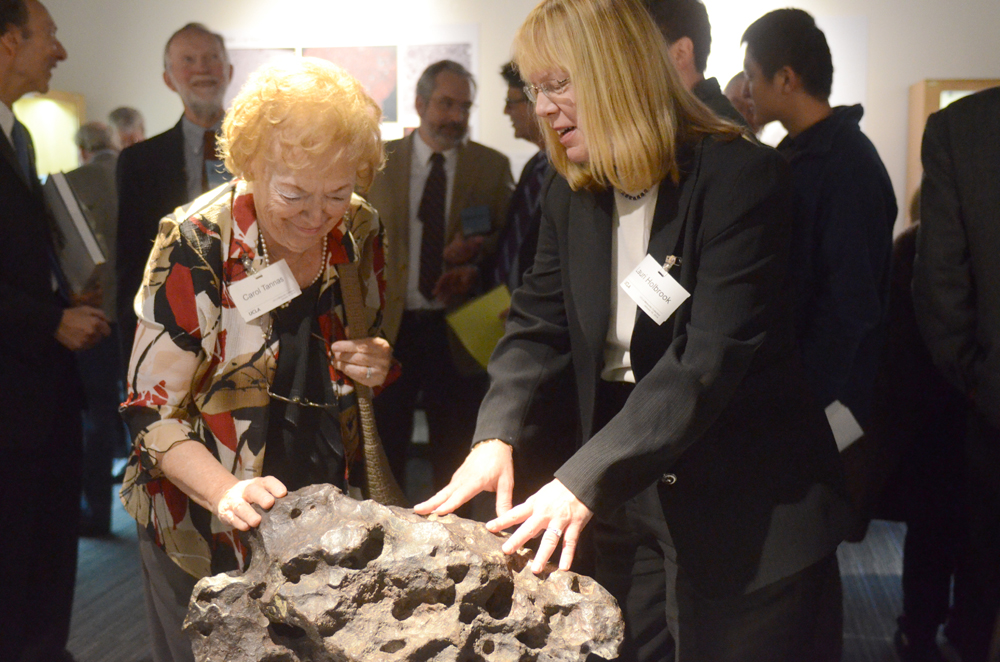UCLA officially opens meteorite gallery with interactive exhibit

Carol Tannan and Lauri Holbrook examine a meteorite at the new UCLA Meteorite Gallery.
By Kelly Gu
Jan. 13, 2014 2:13 a.m.
Visitors stopped to run their hands over the rugged surface of a 357-pound meteorite at Friday’s grand opening of the UCLA Meteorite Gallery.
The dark holes and deep set shadows of the meteorite, also known as the Clark Iron, is the new museum’s primary exhibition.
Located in the Geology Building, the museum contains about 100 meteorites and the fifth largest collection of meteorites in the United States.
“Meteorites tell us a lot of information about the early history of the solar system and the geological history of asteroids,” said Alan Rubin, a research geochemist and an associate curator of the museum. “This collection here helps us in that endeavor, and in our eyes, that’s the true beauty of the meteorites.”
To fund the exhibition, Joseph Rudnick, the dean of the Division of Physical Sciences, and the UCLA Institute for Planets and Exoplanets gave the museum about $40,000.
Martian basalt found in Nigeria gleamed under a magnifying glass in the extraterrestrial basalt display – one of seven displays in the museum. The silvery web surface with pockets of translucent gold of rare pallasite meteorites twinkled in another display called the Schlazer Collection.
Named after Arlene Schlazer, who gave her personal collection of about 350 meteorites to the museum, the collection contains some of the more rare and photogenic meteorites.
“I was always a collector my whole life,” Schlazer said. “The meteorites didn’t look so good at our home and I’m glad they have a new home.”
When John Wasson, a professor of chemistry and biochemistry and associate curator of the museum, came to UCLA about 50 years ago, UCLA had a small collection of meteorites. Since then, the size of the collection has increased 20-fold to contain about 1,500 meteorites.
“In the last 20 years, a lot of meteorites have come in for classification purposes. In order to decide what kind of meteorite it is, we have to analyze it and then classify it,” Rubin said. “Then in return, we get a piece for our collection.”
Wasson said the influx of meteorites started when people began to realize meteorites could be discovered in deserts.
Rubin said only about one out of every 500 samples mailed to him are actual meteorites. The rest are made from materials such as volcanic rocks and petrified wood he dubs “meteor wrongs.”
The museum was expected to have its official opening more than a year ago, but Wasson and Rubin have spent the last year trying to improve the gallery and find more funding before it would officially open its doors.
Funding went toward track lighting and polishing the gallery’s appearance. In the museum, seven cabinets hold the precious metals from outer space, with each cabinet assigned a different theme.
Accompanying each display stands a collection of information, found on the many posters and enlarged images that adorned the walls and plaques.
“Because we provide so much information, we are one of the most scientifically oriented meteorite galleries in the world,” Wasson said.


